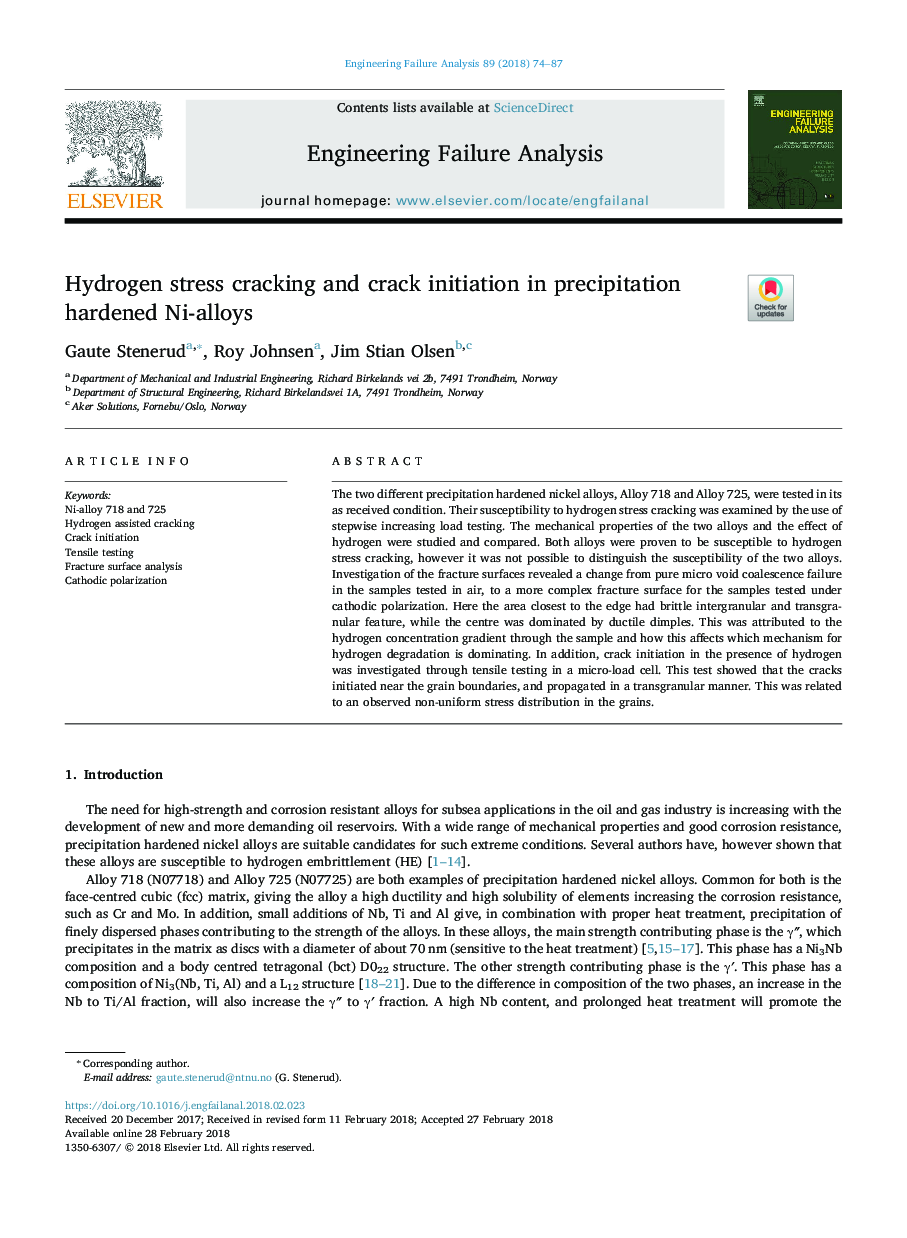| Article ID | Journal | Published Year | Pages | File Type |
|---|---|---|---|---|
| 7167439 | Engineering Failure Analysis | 2018 | 14 Pages |
Abstract
The two different precipitation hardened nickel alloys, Alloy 718 and Alloy 725, were tested in its as received condition. Their susceptibility to hydrogen stress cracking was examined by the use of stepwise increasing load testing. The mechanical properties of the two alloys and the effect of hydrogen were studied and compared. Both alloys were proven to be susceptible to hydrogen stress cracking, however it was not possible to distinguish the susceptibility of the two alloys. Investigation of the fracture surfaces revealed a change from pure micro void coalescence failure in the samples tested in air, to a more complex fracture surface for the samples tested under cathodic polarization. Here the area closest to the edge had brittle intergranular and transgranular feature, while the centre was dominated by ductile dimples. This was attributed to the hydrogen concentration gradient through the sample and how this affects which mechanism for hydrogen degradation is dominating. In addition, crack initiation in the presence of hydrogen was investigated through tensile testing in a micro-load cell. This test showed that the cracks initiated near the grain boundaries, and propagated in a transgranular manner. This was related to an observed non-uniform stress distribution in the grains.
Keywords
Related Topics
Physical Sciences and Engineering
Engineering
Industrial and Manufacturing Engineering
Authors
Gaute Stenerud, Roy Johnsen, Jim Stian Olsen,
